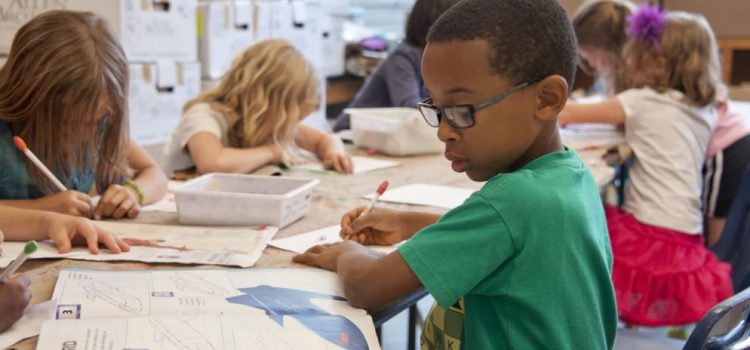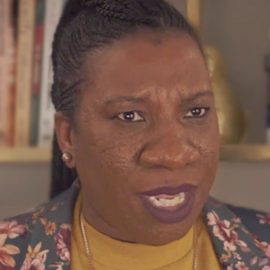

This article is an excerpt from the Shortform book guide to "Biased" by Jennifer L. Eberhardt. Shortform has the world's best summaries and analyses of books you should be reading.
Like this article? Sign up for a free trial here .
Is there still systemic racism in schools? How does systemic racism occur? What are the possible long-term impacts of the situation?
Although schools are no longer legally segregated, that does not mean that school systems unbiased. Systemic racism in schools is very real and the repercussions affect the students long after they graduate.
Learn how and why systemic racism in schools occurs and the long-term impacts on society and individuals.
Bias in Schools
According to Jennifer Eberhardt, the author of Biased, schools are no longer legally segregated, but black and white students still don’t have truly equal educational experiences. In this article, we’ll discuss the ways systemic racism in schools impacts black students, why “not seeing color” doesn’t help students, and the innovative ways that educators can reduce racial bias in their classrooms.
School Integration
In the United States today, many people assume that racism in schools is a thing of the past because there are no longer laws explicitly barring black students from certain schools. However, in reality, systemic racism in schools has increased in the last few decades. The number of schools where white students make up less than 10% of the population has more than tripled. Meanwhile, the proportion of black students who attend segregated schools has increased by 11%. This is a problem because research shows that students of all races learn best in integrated schools.
Beyond academics, integration has social benefits: Adults who attended integrated schools are much more likely to have racially diverse friends, live in more diverse neighborhoods, and be more civically engaged than people who attended segregated schools. (Shortform note: One benefit of integrated schools that Eberhardt doesn’t mention is that they prepare students to enter an increasingly diverse workforce. In fact, when the Supreme Court heard an affirmative action case in 2015, nearly half of the Fortune 100 companies collectively filed an amicus brief arguing that “a workforce trained in a diverse environment is critical to their business success.”)
However, integration alone isn’t always the answer. For integration to actually break through systemic racism and allow people to form genuine interracial bonds, it must happen under very specific conditions that were first proposed by researcher Gordon Allport in the 1950s. For example, the people involved must have equal status in the official hierarchy (for instance, in a school setting, a successful interracial interaction could be between two students or two teachers, but not between a student and a teacher). The interaction must also have the support of authorities (like teachers or upper management) and the contact must be genuine and personal.
| Contact Theory and the Possible Risks of Integration Allport’s research on the specific conditions that promote interracial bonds gave rise to “contact theory,” or the idea that contact between people of different races can reduce racial prejudice. Many studies have found that this effect is especially strong in interracial friendships (as opposed to colleague or neighbor relationships). However, these studies haven’t fully addressed the problem of causation—in other words, do interracial friendships make people less biased, or are people who are already less biased more likely to seek out interracial friendships? Contact theory comes with two other major caveats. First, research shows that when people from socially disadvantaged groups have more positive contact with people from privileged groups, they’re less likely to support social policies that would level the playing field. Second, negative interracial contact increases prejudice more than positive contact reduces it. In simplified terms, each positive interracial experience a person has will make them a little less prejudiced; but a single negative interracial interaction can erase all that progress. That’s probably because we notice racial differences more when the contact is negative. |
The Threat of Racial Bias Impedes Learning
Eberhardt argues that even when black and white students attend the same schools, their educational experiences aren’t equal. White students take it for granted that they’re seen and valued as individuals at school; black students often don’t have the same guarantee. Even at a young age, they’re well aware of the stereotypes that might be lurking in their teachers’ minds, and many black students learn to defend themselves from possible racist treatment by never fully letting their guard down. That makes learning difficult because learning is a vulnerable process—it requires being honest about what you don’t know or don’t understand. And when kids don’t feel safe enough to be vulnerable, it’s much harder to learn, regardless of how smart they are.
However, black students don’t just face the threat of biased treatment from their teachers—their own implicit biases can undermine their school performance. When black students struggle in school, it can feel like evidence that the negative stereotypes about their intelligence may actually be true. That thought can be a devastating blow to their self-esteem, which in turn makes it harder to do well in school and sets off a vicious cycle of self-sabotage. (Shortform note: This process is similar to “stereotype threat,” a psychological phenomenon in which the fear of confirming a negative stereotype about your group can negatively affect your performance. In Lean In, author Sheryl Sandberg describes how stereotype threat can keep girls from pursuing math or science: Being constantly reminded of the stereotype that “boys are better at math” affects girls’ performance in those areas.)
Systemic Racism in Schools Is Very Real
Unfortunately, black students have good reason to be wary of bias in their schools. Research shows that black students face unequal treatment, especially when it comes to punishment. In one study, Eberhardt and her colleagues found that teachers are typically fair when punishing a student for the first time—but for a second infraction, they administer much harsher punishments for black students than white students. This builds on implicit racial stereotypes: If a black student repeatedly gets in trouble, teachers are more likely to see that as evidence that they’re headed for a life of crime—but when a white student repeatedly gets in trouble, teachers are more likely to see that as pure childhood antics.
| Suspension: The First Step in the School-to-Prison PipelineThe racial disparities in school discipline are linked to the racial disparities in the criminal justice system. According to the American Civil Liberties Union, school suspensions contribute to the school-to-prison pipeline because students who are suspended or expelled are more likely to get into trouble with the law. |

———End of Preview———
Like what you just read? Read the rest of the world's best book summary and analysis of Jennifer L. Eberhardt's "Biased" at Shortform .
Here's what you'll find in our full Biased summary :
- How implicit bias forms in the brain
- Whether or not bias training actually works
- Why there has been a sudden resurgence in white nationalism






